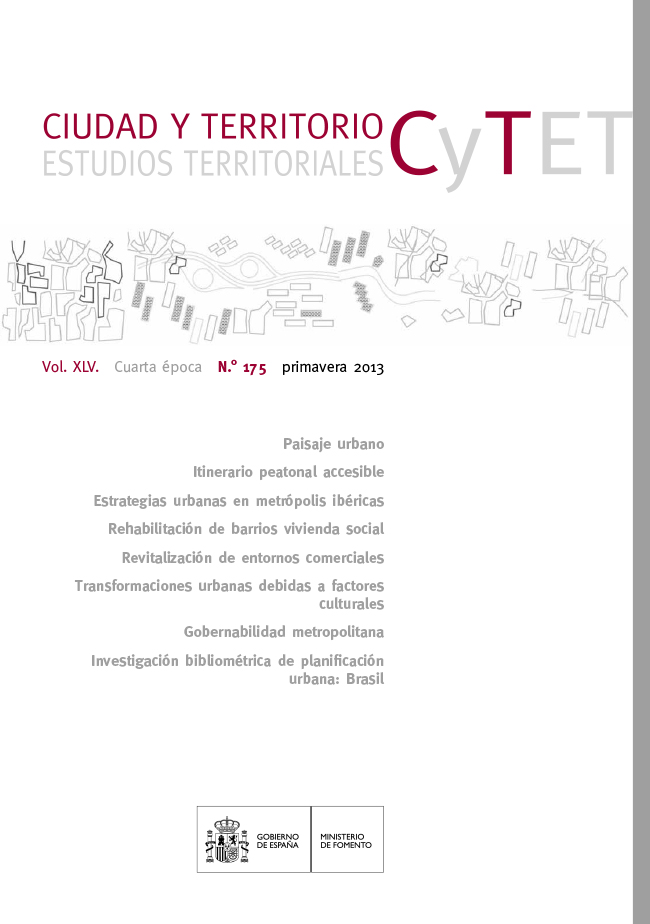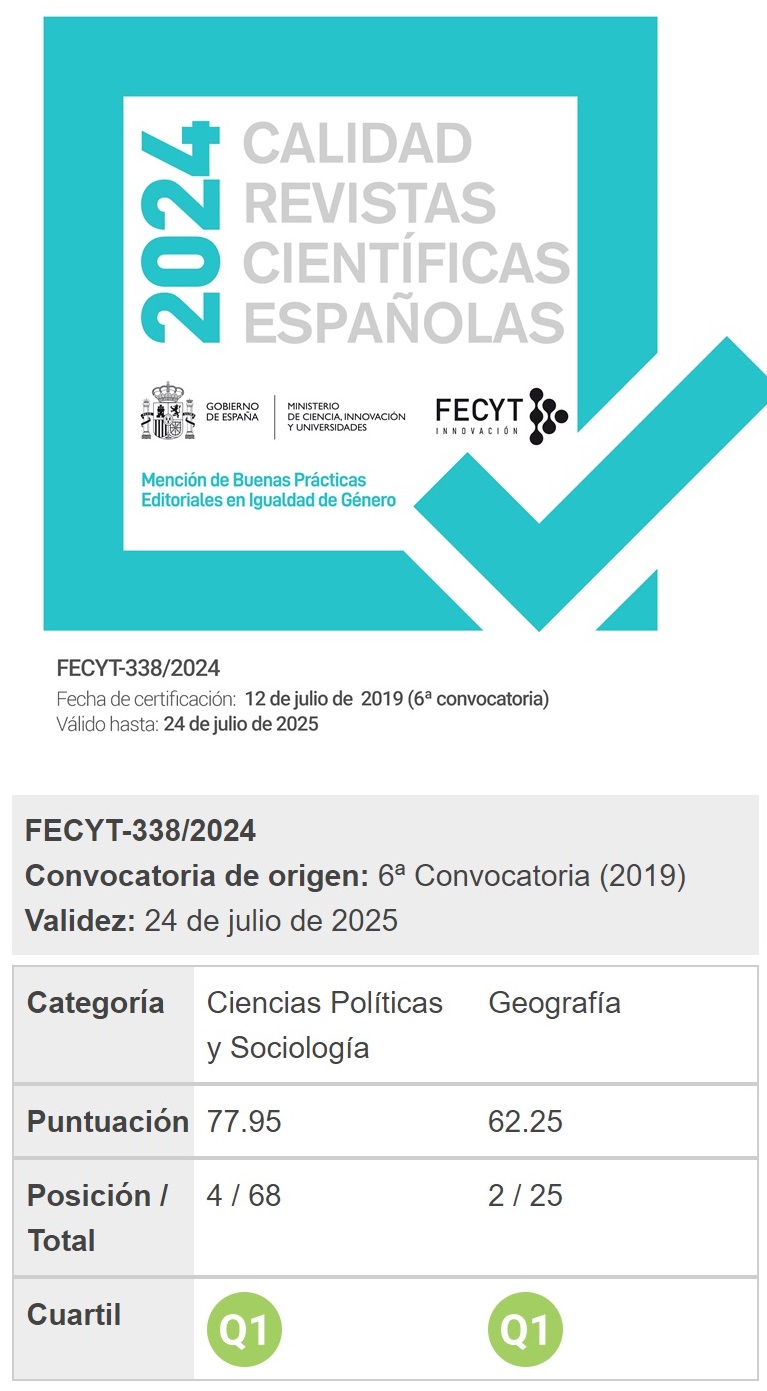El itinerario peatonal accesible: estructurando una movilidad funcional, segura y no discriminatoria en los espacios públicos urbanizados
Palabras clave:
Accesiblidad, espacios públicos, itinerarios peatonales, diseño urbanoResumen
Tras dos décadas de regulación autonómica sobre accesibilidad la aprobación
de la Orden Ministerial VIV561/2010 de 10 de febrero por la que se desarrolla
el documento técnico de condiciones básicas de accesibilidad y no discriminación
para el acceso y utilización de los espacios públicos urbanizados establece un nuevo
marco regulador en los espacios públicos de las ciudades españolas. Lo más relevante
de esta Orden no es sólo que unifica criterios previamente regulados de forma diversa
por las comunidades autónomas, sino que introduce un nuevo concepto que
sintetiza los principales contenidos de accesibilidad y se puede convertir en una figura
importante en el futuro diseño urbano: el Itinerario Peatonal Accesible (IPA). En el
IPA se concretan los beneficios que la accesibilidad aporta al diseño de los espacios
públicos: una mayor funcionalidad, seguridad y no discriminación, a través de la creación
de un ámbito protegido para el uso peatonal, donde todas las condiciones de
accesibilidad en la movilidad peatonal estén escrupulosamente garantizadas.
El artículo justifica la creciente importancia de la accesibilidad como elemento de
transformación urbana, revisa la dispersión normativa preexistente y desarrolla las
características del IPA, su importancia y alcance en un contexto de envejecimiento y
mayor diversidad funcional.
Descargas
Descargas
Publicado
Cómo citar
Número
Sección
Licencia
Derechos de autor 2013 Fernando Alonso López

Esta obra está bajo una licencia internacional Creative Commons Atribución-NoComercial-SinDerivadas 4.0.
Sin perjuicio de lo dispuesto en la legislación vigente sobre Propiedad Intelectual, y conforme a la misma, el/la los/las autor/a/es/as que publiquen en CyTET cede/n a título gratuito, de modo no exclusivo y sin límite temporal al Ministerio de Transportes, Movilidad y Agenda Urbana los derechos para difundir, reproducir, comunicar y distribuir en cualquier formato actual o futuro, en papel o electrónico, la versión original o derivada de su obra bajo licencia de Creative Commons Reconocimiento-NoComercial-SinObraDerivada 4.0 Internacional (CC BY-NC-ND 4.0), así como para incluir o ceder a terceros la inclusión de su contenido en índices, repositorios y bases de datos nacionales e internacionales, con referencia y reconocimiento en todo caso de la autoría del mismo.
Además, al realizar el envío, el/la los/las autor/a/es/as declara/n que se trata de un trabajo original en el que se reconocen las fuentes que han sido utilizadas en su estudio, comprometiéndose a respetar la evidencia científica y a no modificar los datos originales para verificar o refutar una hipótesis de partida; que el contenido esencial del mismo no ha sido publicado previamente ni se publicará en ninguna otra obra o revista mientras esté en proceso de evaluación en la revista CyTET; y que no se ha remitido simultáneamente a otra publicación.
Los autores deben firmar un Formulario de Cesión de Derechos, que les será enviado desde la Secretaría de CyTET una vez se acepte su artículo para ser publicado.
Con el objetivo de favorecer la difusión del conocimiento, CyTET se adhiere al movimiento de revistas de Open Access (OA) y entrega la totalidad de sus contenidos a diversos índices, repositorios y bases de datos nacionales e internacionales bajo este protocolo; por tanto, la remisión de un trabajo para ser publicado en la revista presupone la aceptación explícita por parte del autor/a de este método de distribución.
Se anima a las/os autoras/es a reproducir y alojar sus trabajos publicados en CyTET en repositorios institucionales, páginas web, etc. con la intención de contribuir a la mejora de la transferencia del conocimiento y de la citación de dichos trabajos.








 Enlace a CyTET en Linkedin
Enlace a CyTET en Linkedin